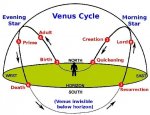- Joined
- Dec 3, 2013
- Messages
- 57,470
- Reaction score
- 14,587
- Gender
- Undisclosed
- Political Leaning
- Undisclosed
Those articles do not respond to the points made. Yes, they make those claims.. but let's see a pointer to the primary evidence. Have you noticed one similarity between those two articles?? They claim there is 'archeological evidence', yet, they don't point to what it is, nor the primary sources, They make claims about it, but don't back it up.
That is good for apoglistics, but not good as history. The actual historical evidence is different that what these apology sites claim.
what degree do you have in theology i would like to know. if you don't have a degree in theology then you are going to have to incredible sources of information in order to say they are wrong.
why because the people that i am quoting have PHD's in theology and have been to seminary school.
so who am i going to believe more random internet poster with 0 degree in theology or a PHD with a theology degree?
so far you have posted 0 sources an 100% opinion.
you are not winning this at all.
that is the point of aplogetics is to defend what is written in scripture. history tells us exactly what is happening, and history does match exactly what was written by the gospels of luke and matthew and mark.
there is no contradiction.
the only contradiction is the made up one that people claims. yet they offer 0 support for their evidence.
as i showed you already.
the date Christs birth between 8-4CE.
the Roman empire was in control of Judea during that time and Augustus can order a census and a tax in israel as they are nation under Roman control.
This was shown in egyptian scrolls saying that all non-egyptians another country under Roman rule would have to return to their own nation.
yes they do back it up you evidently only read what you want to read.
Next we have it historically documented that Quintarsis held 2 high govenoring positions in Syria during that time frame.
He was first a military leader then he became the actual govenor.
the link you ignored that cites the orginal archeology.
A Brief Comment on the Census in Luke 2
the word govenor had several meanings.
he was first a govenor of the military and enacted the first census decreed by augustus in syria and the provence under it's control.
Once More: Quirinius's Census
there goes your argument on not citing orginal sources. you evidently didn't read the links posted and only read what you wanted to.

